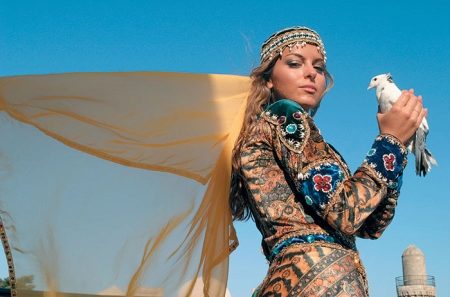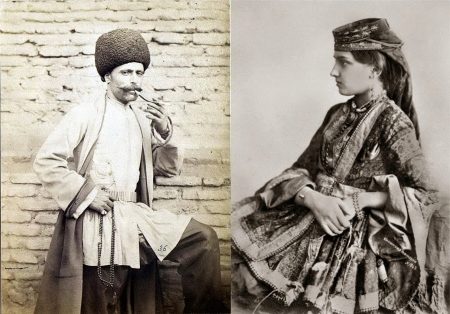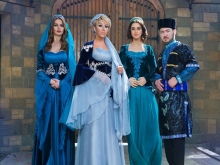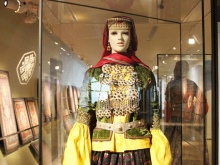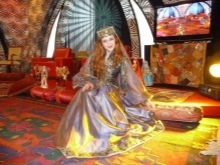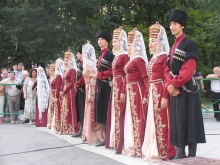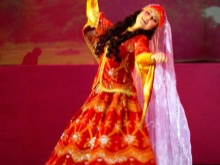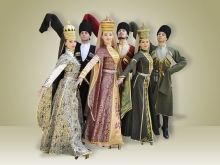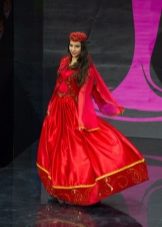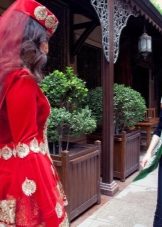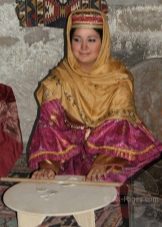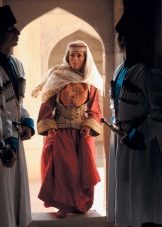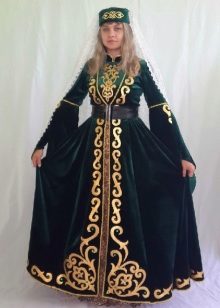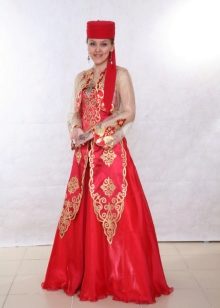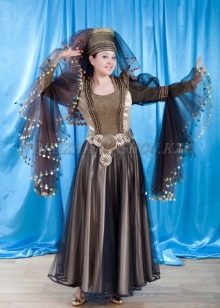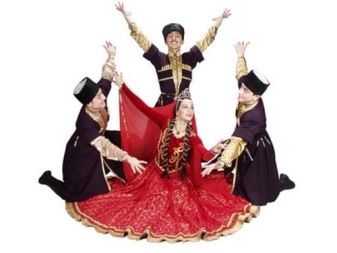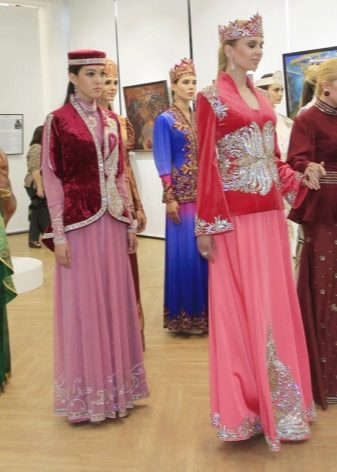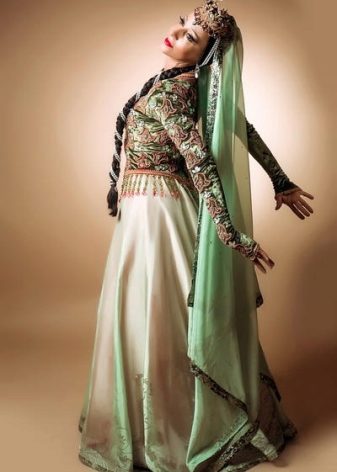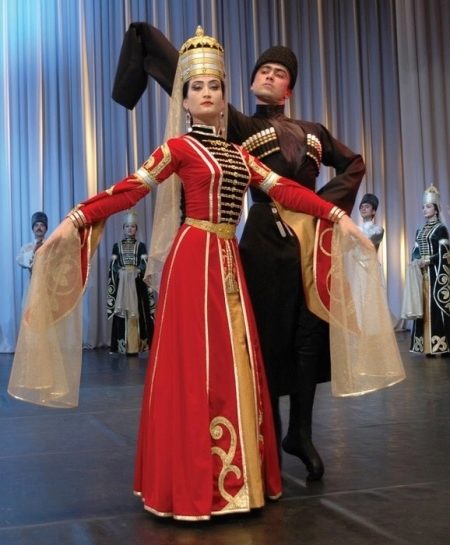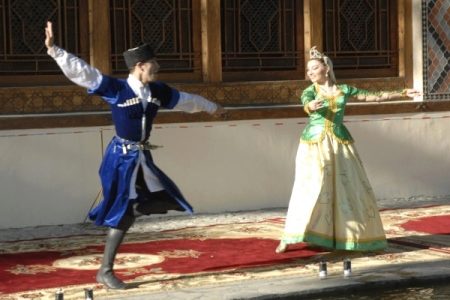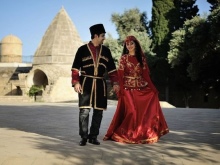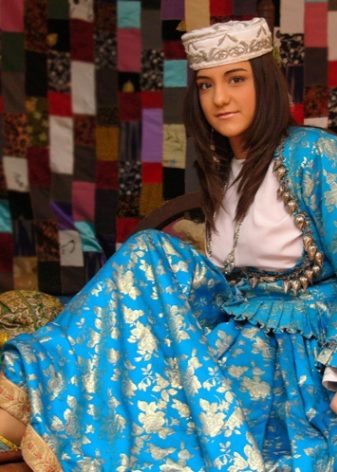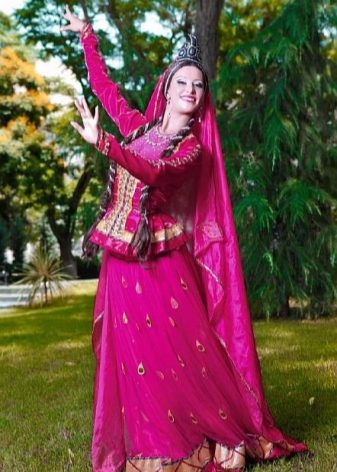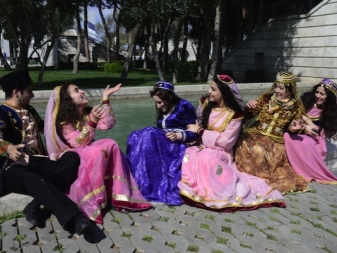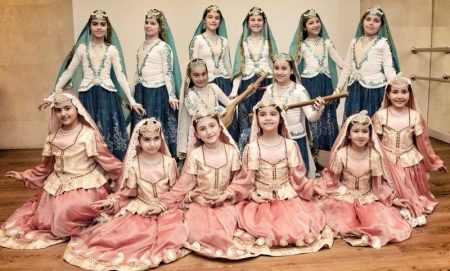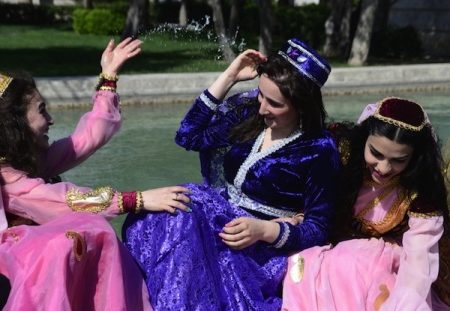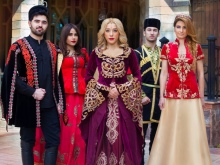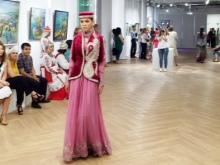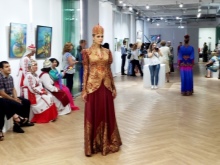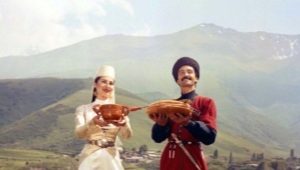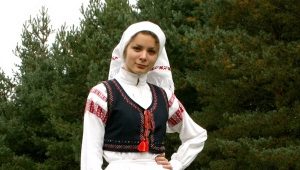Azerbaijani national costume

Azerbaijani national costume is a very beautiful outfit that reflects all the national specifics of the people. In the process of creating a suit has undergone changes, as well as his country. The national costume is distinctive and beautiful. Every detail in it is a specific symbol.
A bit of history
People learned to make their clothes in very distant times. Found archaeological excavations in the territory of Azerbaijan indicate the presence of this ability three thousand years ago BC. er Then bronze needles and knitting needles, gold jewelry, clay vessels in the form of shoes were found. All this speaks about the skill of people and the development of culture already in those days.
In the 17th century AD, Azerbaijan was considered one of the main areas of silk production. Fabrics were famous for their beauty, patterns. Scarves and other things were made of amazing beauty.
Features
As in any national costume, there are a number of features inherent in Azerbaijanis inherent only to him.
Colors and shades
The colors are dominated by bright red juicy shades. And even the wedding dress, the bride sews it out of red. For Azerbaijanis, red is a symbol of well-being and happiness. The word "Azer" itself is translated from Arabic as fire.
Young girls preferred to wear dresses of bright and variegated fabrics decorated with various golden patterns. In this way, they were so different from Georgian and mountain women who preferred to wear clothes of dark colors. Therefore, the bright colors are a distinctive feature of the Azerbaijani national costume.
Fabric and cut
The material for the manufacture of costumes was diverse, both in its production and imported. To the local belonged silk, which they learned to do for a very long time. For clothes for every day used flax, wool or chintz. Wealthy people could wear clothes of more expensive fabrics - velvet, silk, fine cloth and tirme.
Finishing clothes could make from the simplest outfit an expensive and rich-looking suit. Craftswomen with the help of embroidery with beads, gold and silver threads, braid, thin laces created a real work of art. Usually decorated edges of clothing, sleeves, shelves caftans. Casual clothing was decorated with bright prominent lines.
They used coins made of precious metals as ornaments that could be collected by whole generations.
Varieties
Men, Azeris, wore a shirt, trousers, and a beshmet narrowed at the waist. In cold weather, a sheepskin coat was worn from above. Among the things of men's suit, Circassian singled out. Circassian on top of a shirt tucked into pants, boots and a hat on his head - this is what a real man in Azerbaijan looked like. Over time, the Terek and Kuban Cossacks adopted this image of the men of the North Caucasus.
In a Circassian bodyguard with a tight-fitting body, a Caucasian warrior looked very beautiful on horseback — broad shoulders, slender waist, and slender muscular figure. Circled worn buttoned, with bent sleeves. On the chest are special pockets - gazyrnitsy. Gaseous tubes were inserted into them, in which there was gunpowder for exactly one shot, or bullets formed. The large size of the pockets helped to avoid wounds from cuts when attacking an opponent. Over time, the gazyrnitsy lost their direct purpose and become an element of decoration.
Mandatory attribute of the suit was a belt, which hung cold weapons.The headdress was a hat made of sheep or astrakhan.
The women's costume consisted of a shirt, the sleeves of which widened to the bottom, a short caftan and a long fluffy skirt. All these things were embroidered and decorated with various decorations - gold threads, various patterns, precious coins. The dress was sewn of bright fabric, usually red.
Caps of various shapes, caps, scarves of various colors and sizes were put on the woman’s head. Unmarried girls covered their heads with a hat like a skullcap, which was decorated with beads or silk. Married women tied a few scarves on the head, such a hat was called dingya.
They wore socks or stockings on their feet, which were with different patterns. They were knitted by the women themselves, made of wool or cotton thread. Patterns on stockings resembled patterns on carpets.
Accessories and shoes
Shoes for women were shoes without the back, with a pointed nose and a small heel. They were worn in the warm season. And in the winter on foot the rawhide - charyg was put on.
Men wore charyg in the countryside, and in the city shoes, shoes without backs or boots.
Accessories served as various decorations. They began to be worn by girls as young as 3-4 years, rather, as a talisman against the evil eye. And for marriage, the girl had already collected a whole collection of jewelry. Wearing them was not always allowed. It was forbidden to wear jewelry in the days of a religious ceremony, for 40 days after death or childbirth. Older women could only wear modest earrings and a pair of rings. The difference between the rich and the poor was not too noticeable, they were similar in type. The rich in jewelry had gems, they could be more difficult to perform.
Before marriage, the girls did not wear a belt at all. At the wedding, the bride's parents gave her the first belt - Kemer. After that, the woman began to wear a belt, they have already shown her married status in society. The belt was decorated with coins and fastened with a large buckle on the hooks.
Modern models
Now, on the streets of Azerbaijan, people no longer dressed in national costumes are found. They were worn until about the 20th century, and in the countryside a little longer. But you can see them in theatrical performances, museums.
But at the moment, the idea of a trousers, long skirt, outerwear, similar to things from the Azerbaijani national costume was taken as a basis by many European designers. Therefore, seeing such things in Italian clothes, do not be surprised. Local designers in Azerbaijan are also starting a return to their culture in fashion.
